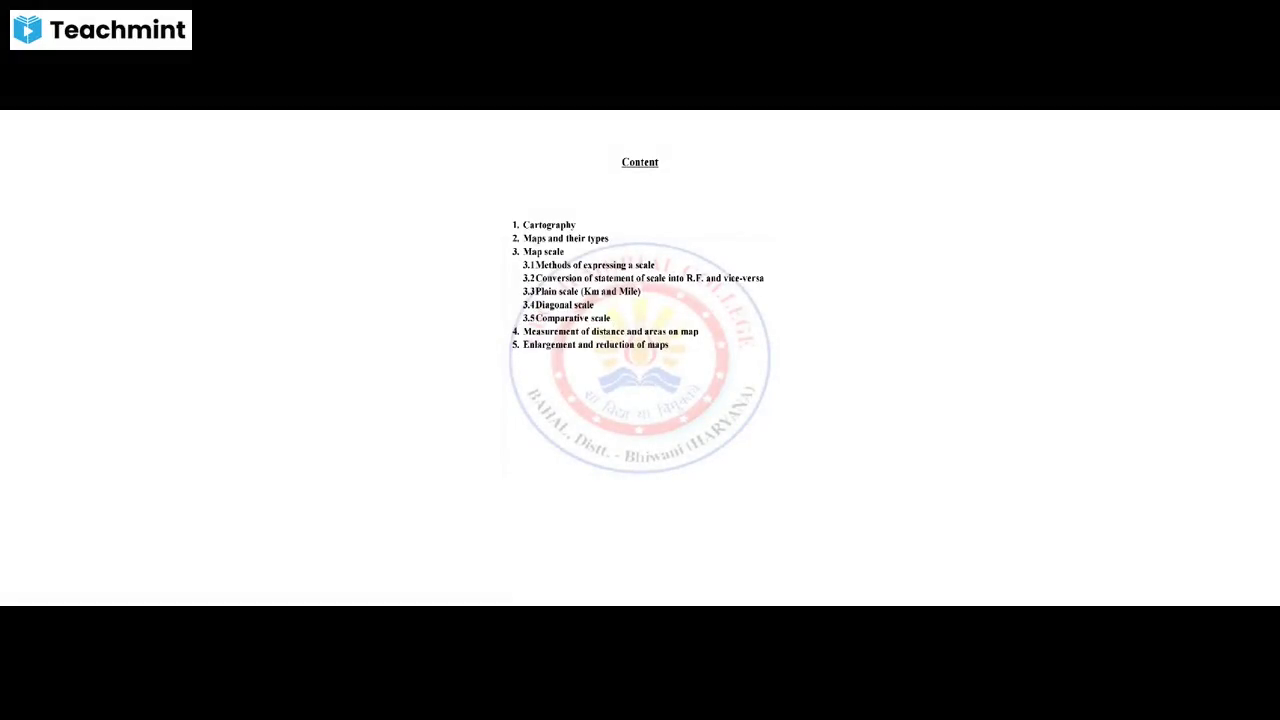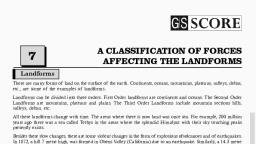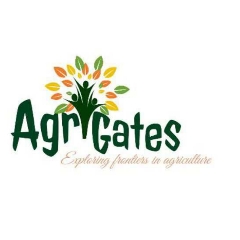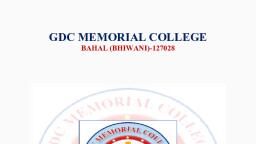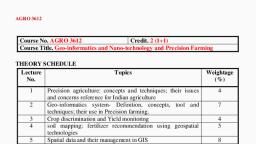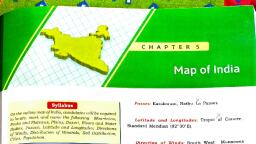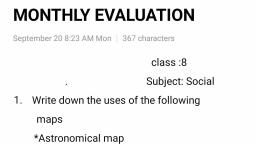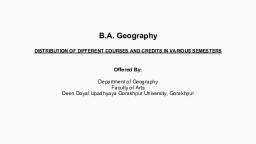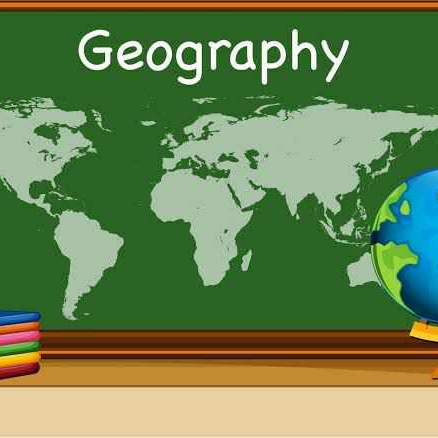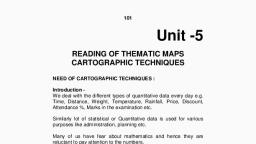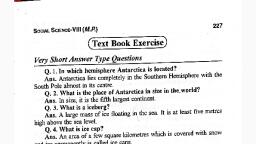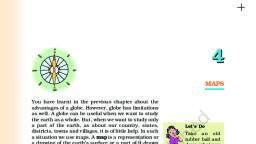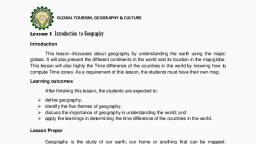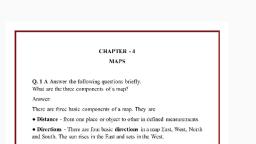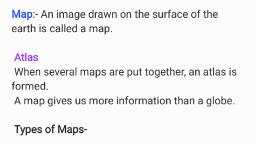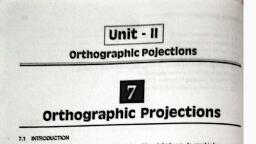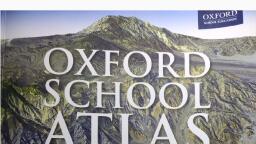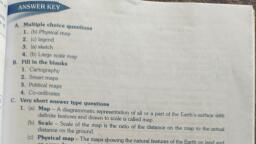Page 1 :
GDC MEMORIAL COLLEGE, BAHAL (BHIWANI)-127028, , Lab Manual, Geography (B.A 1st Semester), , Department of Geography
Page 2 :
Content, , 1. Cartography, 2. Maps and their types, 3. Map scale, 3.1 Methods of expressing a scale, 3.2 Conversion of statement of scale into R.F. and vice-versa, 3.3 Plain scale (Km and Mile), 3.4 Diagonal scale, 3.5 Comparative scale, 4. Measurement of distance and areas on map, 5. Enlargement and reduction of maps
Page 3 :
1. Cartography: Cartography the art and science of graphically representing a geographical area, usually, on a flat surface such as a map or chart. It may involve the superimposition of political, cultural, or other, no geographical divisions onto the representation of a geographical are, Cartography is the creation and the study of maps and charts - the difference being that maps, apply to land and charts are for marine areas.. It has a long tradition going back at least 4000, years; inextricably tied to geography for most of its history, in the 20 th century it has diversified, as it becomes more relevant in an increasingly digital modern world., 2. MAPS AND THEIR TYPES:, A map is a symbolic representation of selected characteristics of a place, usually drawn on a flat, surface. Maps present information about the world in a simple, visual way. They teach about the, world by showing sizes and shapes of countries, locations of features, and distances between, places., , Purpose of maps:The purpose of maps lies chiefly in navigation and in helping cultures, determine new trade routes. Throughout history, governments have put a priority on creating, detailed, accurate maps. Today, the term "map" also refers to visual representations of various, ideas and concepts. In geography maps play a very important role . it is helpful in the study, related geography as mining, flood effect, study of river basin etc., Types of maps:There are several types of maps. Each show different information. Most maps, include a compass rose, which indicates which way is north, south, east and west. They also, include a scale so you can estimate distances. Here's a look at some different types of maps.
Page 4 :
2.1 Climate maps:, Give general information about the climate and precipitation (rain and snow) of a region., Cartographers, or mapmakers, use colors to show different climate or precipitation zones., , 2.2 Economic or Resource Maps:, Feature the type of natural resources or economic activity that dominates an area., Cartographers use symbols to show the locations of natural resources or economic, activities.
Page 5 :
2.3 Physical Maps:, Illustrate the physical features of an area, such as the mountains, rivers and lakes. The, water is usually shown in blue. Colors are used to show relief—differences in land, elevations. Green is typically used at lower elevations, and orange or brown indicate, higher elevations., , 2.4 Political maps, Do not show physical features. Instead, they indicate state and national boundaries and, capital and major cities. A capital city usually marked with a star within a circle.
Page 6 :
2.5 Road maps Show major, some minor highways,and roads, airports, railroad tracks, cities, and other points of interest in an area. People use road maps to plan, Trips and for driving directions.
Page 7 :
2.7 Topographic maps, Include contour lines to show the shape and elevation of an area. Lines that are close, together indicate steep terrain, and lines that are far apart indicate flat terrain., , 3. Map scale: Map scale refers to the relationship (or ratio) between distance on a map and, the corresponding distance on the ground. For example, on a 1:100000 scale map, 1cm on, the map equals 1km on the ground., 3.1 Methods of Expressing Scale:3.1.1. Statement of Scale:, The scale of a map may be indicated in the form of a written statement. For example, if on a map, a written statement appears stating 1 cm represents 10 km, it means that on that map a distance, of 1 cm is representing 10 km of the corresponding ground distance. It may also be expressed in, any other system of measurement, i.e. 1 inch represents 10 miles. It is the simplest of the three, methods. However, it may be noted that the people who are familiar with one system may not, understand the statement of scale given in another system of measurement. Another limitation of, this method is that if the map is reduced or enlarged, the scale will become redundant and a new, scale is to be worked out., , 3.1.2. Graphical or Bar Scale:, The second type of scale shows map distances and the corresponding ground distances using, a line bar with primary and secondary divisions marked on it. Hence, like the statement of, scale method, this method also finds restricted use for only those who can understand it., However, unlike the statement of the scale method, the graphical scale stands valid even, when the map is reduced or enlarged. This is the unique advantage of the graphical method, of the map scale.
Page 8 :
3.1.3 Representative Fraction (R. F. ):, The third type of scale is R. F. It shows the relationship between the map distance and the, corresponding ground distance in units of length. The use of units to express the scale makes, it the most versatile method. R. F. is generally shown in fraction because it shows how much, the real world is reduced to fit on the map. For example, a fraction of 1 : 24,000 shows that, one unit of length on the map represents 24,000 of the same units on the ground i.e. one mm,, one cm or one, 3.2Conversion of scale:If we have carefully read the advantages and limitations of the different, methods of scale, then it will not be difficult for you to convert the Statement of Scale into, Representative Fraction and vice-versa., , Statement of Scale into R. F., Problem -, , the given Statement of Scale of 1 inch represents 4 miles into R. F., , Solution steps., , The given Statement of Scale may be converted into R. F. using the following, 1 inch represents 4 miles, or 1 inch represents 4 x 63,360 inches (1 mile = 63,360 inches, or 1 inch represents 253,440 inches, , NOTE:, We can now replace the character “inches” into “units” and read it as : 1 unit, represents 253,440 units, Answer R. F. 1: 253, 440, R. F. into Statement of Scale, Problem, , Convert R. F. 1: 253, 440 into Statement of Scale (In Metric System), , Solution, The given R. F. of 1 : 253, 440 may be converted into Statement of Scale using the, following steps :, 1 : 253, 440 means that 1 unit on the map represents 253, 440 units on, the ground., Or 1 cm represents 253, 440/100,000 (1 km = 100,000 cm), Or 1 cm represents 2.5344 km
Page 9 :
After rounding of up to 2 decimals, the answer will be :, Answer:, , 1 cm represents 2.53 km, , Types of Scales and their constructions:, The various types of scales used in practice are, 3.3. Plain or Simple scales,, 3.4. Diagonal scales,, 3.5. Comparative scales, 3.3 Simple or Plain Scales:, They read or measure up to two units or a unit and its sub-division, for, example centimeters (cm) and millimeters (mm). When measurements are required up to first, decimal, for example 2.3 m or 4.6 cm etc. It consists of a line divided into number of equal main, parts and the first main part is sub-divided into smaller parts. Mark zero (O) at the end of the first, main part. From zero mark numbers to the main parts or units towards right and give numbers to, the sub-divisions or smaller parts towards left. Give the names of the units and sub-units below, clearly. Indicate below the name of the scale and its R.F clearly., The construction of the plain scale is explained below by a worked example., A 3 cm long line represents a length of 4.5 meters. Extend this line to measure up to 30, meters and show on it units of meter and 5 meter. Show the length of 22 meters on this line., , i) The scale has to represent metre and 5 meters; hence it is a Simple or Plain scale., ii) Given that 3cm represents 4.5metres or 450cm, Hence 1cm represents 450/3=150cm, hence, scale is 1cm=150cm or 1:150: R.F=1/150, iii) Maximum length to read is 30metres; Length of the scale is 20cm. i.e. (1/150) x30x100 =, 20cm
Page 10 :
3.4 Diagonal Scales:, Diagonal scales are used to read or measure up to three units., For example: decimeters (dm), centimeters (cm) and millimeters (mm) or miles, furlong, gs and yards etc. This scale is used when very small distances such as 0.1 mm are to be, accurately measured or when measurements are required up to second decimal., For example: 2.35dm or 4.68km etc., Small divisions of short lines are obtained by the principle of diagonal division, as explained, below:, Principle of diagonal scale: To divide a given line AB into small divisions in multiples of 1/10, its length for example 0.1AB; 0.2AB etc. as shown in
Page 11 :
3.5 Comparative Scale:Comparative scale is a pair of scales having a common, R.F. but graduated to read different units. A map drawn with a scale reading, miles and furlongs can be measured off directly in kilometer and hectometer, by a comparative scale., , 4., 5., 6., 7.
Page 12 :
4. (A)Measurement of Distance on Map:Sometimes we need to know the original length, of the road or the river .for this these are the main methods:4.1. By scale or dividers –distance between two points on map or simple linear features like, canal or roads length measuring through this technique .It is very easy technique, 4.2. By paper strip:This method is suitable for determining the length of rugged rams. In this method, those routes, are first divided into small pieces and after that the leaves of the paper are carefully dotted and, the distance measured, 4.3. By opisometer:This is an instrument for measuring the distance on the map, in which there is a, small wheel. This wheel is related to the dial, on this dial distance is written in inches or, centimeters .By using opisometer on map the distance is measured.
Page 13 :
4. (B) Measurement of area:The students of geography it is also necessity that have know the, method of area measurement. These are the main methods:4.1 . Square method :This is the very simple method of computation of area. In this, method graphs are made on map and the blocks into the map are counting and calculate, them., 4.2., Geometrical Method :In this method first of all triangles made with maximum size and, after this formula used:Area of, , ∆, , =, , 𝑝𝑒𝑟𝑝𝑒𝑛𝑑𝑖𝑐𝑢𝑙𝑎𝑟×𝑏𝑎𝑠𝑒, 2, , 4.3., , Dot planimeter method:A planimeter, also known as a platometer, is a measuring, instrument used to determine the area of an arbitrary two-dimensional shape., 5., , Enlargement and reducing of map:-, , IN REDUCING ANY MAP THE FOLLOWING STEPS SHOULD BE TAKEN, , , , , , , , , Measure the length and width of the map., Divide the length and width by 2 or 4 if you are asked to reduced the map to half or a, fourth of its original size. For example, if the length and width of a map are 24cm and, 20cm respectively, such a map should measure 12cm by 10cm if seduced to half its size, and 6cm by 5cm if reduced to a fourth of its size and so on., Having reduced the original map, it is obvious that the scale would equally change., Therefore, if a map has a scale of 1:50,000, the scale of the map changes to 1:100,000 if, the size has been reduced to half, and 1:200,000 if the size of the map has been reduced, to a fourth of its original size., The features to be shown on the reduced map should also be proportional to the required, size of the map., When you have finished drawing the reduced map, remember to write its title and the, new horizontal scale.
Page 14 :
IN ENLARGING ANY MAP THE FOLLOWING STEPS SHOULD BE TAKEN, , , , , , , , , , Measure the length and width of the original map., Multiply the length and width by 2 or 4 respectively if you intend to enlarge the map to, twice or thrice its original size. For example, if the length and width of a map are 5cm, and 3cm respectively, such a map would measure 10cm by 6cm if enlarged to twice its, size and 20cm by 12cm if enlarged four times its size and so on., Having enlarged the original map, it is equally obvious that the scale would change., Therefore, if a map has a scale of 1:60,000, the scale of the map changes to 1:30,000 if, the size has been enlarged twice and 1:15,000 if the size of the map has been enlarged to, four times its original size., The features to be shown on the enlarged map should also be proportional to the required, size of the map., When you have finished drawing the enlarged map, write its title and the new horizontal, scale., , Before one can know whether to reduce or enlarge a map, it may be necessary to divide the, initial scale (scale of the original map) by the scale of the new map to be drawn. For example if, the scale of a map is 1:50,000 and is to be reproduced to a scale of 1:200,000, divide the former, scale with the latter as follows:, 50000/200000=1/4, Therefore the new map should be 1/4 times the size of the original map.
Page 16 :
Content, Sr. No., 1., , Name of the Experiment, Introduction of Topographical sheets, 1.1 Toposheets, 1.2 Toposheet Indexing, , 2., , Convectional Signs, , 3., , Relief Representation, 3.1 Contour Line, 3.2 Hachure, 3.3 Hill Shading, , 4., , Representation of Topographical features by contours, 4.1 Convex Slope, 4.2 Concave Slope, 4.3 U-shaped Valley, 4.4 V-shaped Valley, 4.5 Water Fall, 4.6 Conical Hill, 4.7 Pleatu, , 5., , Profile, 5.1Serial Profile, 5.2 Superimposed Profile, 5.3 Projected Profile, 5.4 Composite Profile
Page 17 :
1. Introduction of Topographical sheets:, , 1.1 Toposheets, In modern mapping, a topographic map is a type of map characterized by large-scale detail and quantitative, representation of relief, usually using contour lines, but historically using a variety of methods. Traditional, definitions require a topographic map to show both natural and man-made features. A topographic map is, typically published as a map series, made up of two or more map sheets that combine to form the whole map.
Page 18 :
1.2 Toposheet Indexing:, Survey of India produces the topographic maps of India. These maps are produced at different scales., In order to identify a map of a particular area, a numbering system has been adopted by the Survey of, India., For the purpose of an international series (within 4° N to 40° N Latitude and 44° E to 124° E, Longitude) at the scale of 1: 1,000,000 is considered as a base map. This map is divided into sections, of 4° latitude × 4° longitude and designated from 1 to 136 consisting of the segments that cover only, land area., , , , Degree sheet Each section is further divided into 16 sections (4 rows and 4 columns) each of 1° latitude × 1°, longitude. The sections start from Northwest direction, run column wise and end in Southeast, direction.
Page 19 :
, , Half degree sheet:, The 1°×1° sheets are further subdivided into four parts, each of 30′ latitude × 30′ longitude. These are, identified by the cardinal directions NE, NW, SE and SW., , , , Quarter degree sheetA 15′×15′ sheet can be divided into 4 sheets, each of 7(1/2)′ and are numbered as NW, NE, SW and, SE
Page 20 :
India and adjacent countries top sheet:, These were printed by Survey of India on 1:250,000; 1:50,000 and 1:25,000 scales. Technically they were, based on Everest Datum and Polyconic Projection. But, since National Mapping Policy - 2005 has been, implemented (May 19, 2005) in our department the production of fresh topographical maps has been stopped., Till date target of 100% OSM sheets printing has not been achieved so these maps are still available in our map, sale counters.
Page 21 :
2. Conventional signs:, On the topographical map their used many kind of signs for different type physical and cultural features .These, signs known as conventional signs.
Page 22 :
3. Relief representation:, In representing physical features relief presentation is also necessary. There are various methods, of relief presentation. Each method has its specific features. The methods are as follows:Method of Relief Representation, , Contour line, , Hachure, , Hill shading, , 3.1Contour line: A contour line is a imaginary line which connects points of equal elevation. Such lines, are drawn on the plan of an area after establishing reduced levels of several points in the area. The contour, lines in an area are drawn keeping difference in elevation of between two consecutive lines constant., , Characteristics of contour line: The contours have the following characteristics:, 1. Contour lines must close, not necessarily in the limits of the plan., 2. Widely spaced contour indicates flat surface., 3. Closely spaced contour indicates steep ground., 4. Equally spaced contour indicates uniform slope., 5. Irregular contours indicate uneven surface., 7. Approximately concentric closed contours with increasing values towards centre indicate hills.
Page 23 :
3.2 Hachure: Hachure is an older mode of representing relief. They show orientation of slope, and by their, thickness and overall density they provide a general sense of steepness. Being non-numeric, they are less, useful to a scientific survey than contours, but can successfully communicate quite specific shapes of terrain., They are a form of shading, although different from the one used in shaded maps., , Hachure image, , 3.3 Hill Shading:, A method of representing relief on a map by depicting the shadows that would be cast by highground if lig, ht were shining from a certain direction. This method is easy for presentation relief features but not useful, as contours. it has many demerits., , Hill shading image, , Characteristics of hill shading:, 1. By hill shading the physical features can easily be interpolated.
Page 24 :
2. This method is useful for small scale map for showing their relief features., 3. Hilly areas features are presented more effectively through this method., 4. It is more effective for cultural and economic features.
Page 25 :
4. Representation of Topographical features by contours:4.1 Concave slope: Contour lines showing a concave slope on a map will be closely spaced at the top of the, terrain feature and widely spaced at the bottom, Considering relief only, the defender at the top of the slope can observe the entire slope and the terrain at the, bottom, but he cannot use grazing fire. The attacker would have no cover from the defender's observation of, fire, and his climb would become more difficult as he got farther up the slope., , 4.2 Convex slope:, Contour lines showing a convex slope on a map will be widely spaced at the top and closely spaced at the, bottom .Considering relief only, the defender at the top of the convex slope can obtain a small distance of, grazing fire, but he cannot observe most of the slope or the terrain at the bottom. The attacker will have, concealment on most of the slope and an easier climb as he nears the top., , Convex slope
Page 26 :
4.3 U-shaped valley:, U-shaped valleys- are formed by the process of glaciations. They are characteristic of, mountain glaciations in particular. They have a characteristics U shape, with steep, straight sides and a flat, bottom. Glaciated valleys are formed when a glacier travels across and down a slope, carving the valley by the, action of scouring., , 4.4 V shaped valley:, When a river is near its source, it often develops a V-shaped valley as the river erodes down (this is, called vertical erosion). At the same time, weathering breaks up material on the valley slopes. Weathered, material from the valley sides gets deposited in the river. This material is carried by the river and erodes the, riverbed through abrasion., , c
Page 27 :
4.5 Water fall:, A waterfall is a place where water flows over a vertical drop or a series of drops in the course of, stream or river. Waterfalls are commonly formed in the upper course of a river.
Page 28 :
4.6 Conical hill:, A conical hill is a landform with a slope. It is usually isolated or rises above other surrounding foothills, and is, often, but not always, of volcanic origin. Conical hills or mountains occur in different shapes and are not, necessarily geometrically-shaped cones; some are more tower-shaped or have an asymmetric curve on one, side.
Page 29 :
4.7 Plateau:, A plateau is a flat, elevated landform that rises sharply above the surrounding area on at least one side., Plateaus occur on every continent and take up a third of the Earths land. They are one of the four major, landforms, along with mountains, plains, and hills. Contours are shown upper side with conical hill.
Page 30 :
5. Profile:, A relief profile is a line which shows the rise and fall of the surface of the ground along a chosen line on a, map. One of the advanced techniques of representation of relief is to draw a relief profiles. A profile of a relief, feature acts as a visual aid in its description and interpretation. Hence it is of particular interest to geographers, and especially geomorphologists who are interested in the analysis of landforms and in the process of their up, gradation and degradation. Identifying landform features with the help of contours is complex whereas profiles, are relatively easy and useful in understanding the relief features. Broadly speaking, a profile which is also, known as a section means an outline of a relief (elevation or depression) along a selected line. However,, sometimes a distinction is made between a section and profile. A Section is usually a cutting taken for a, geological section, whereas a profile is a outline of the surface relief feature like profile of a river valleys., 5.1 Serial / Simple profile:, These are made by drawing a series of profile or parallel profiles for showing features like a coastline; edges of, plateau; a series of spurs; a transverse profile of a river; a junction of two contrasting topographical features, etc., , 5.2 Superimposed Profile:, When a series of profile are superimposed on a single plane it is called as superimposed profile. These, successive profiles are numbered for getting clarity. Such profiles are generally used for representing, landforms with certain morphological uniformity
Page 31 :
5.3 Projected Profile:, In the superimposed profiles, the successive parallel profiles are placed on a common base line. However, the, lower parts of the profiles are hidden behind the higher intervening altitudes. If only the visible parts of, successive profiles are represented on a common framework one gets a panoramic view of foreground, middle, 18 grounds and the sky line. Such profiles are known as projected profile or compressed profile, , 5.4 Composite Profile:, If the superimposed profile of a landform is viewed carefully one can discern at the farthest end of such a, profile, a summit line, the skyline which provides a general outline of the concerned landform features as, viewed from a distance. This skyline can be represented by a profile or a line drawn by joining the highest, parts of a series of parallel profiles. Such a profile is known as composite profile. Such profiles can be used for, a comparative analysis of the terrain types in a region or between regions


